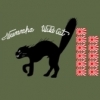
Had the the TSR.2 Survived by Air Chief Marshal Sir Patrick Hine
By
dtmdragon, in Thirdwire: Strike Fighters 2 Series - Sci-Fi/Anime/What If Forum

By
dtmdragon, in Thirdwire: Strike Fighters 2 Series - Sci-Fi/Anime/What If Forum
By using this site, you agree to our Terms of Use, Privacy Policy, and We have placed cookies on your device to help make this website better. You can adjust your cookie settings, otherwise we'll assume you're okay to continue..